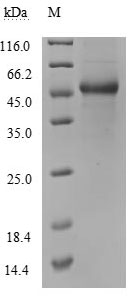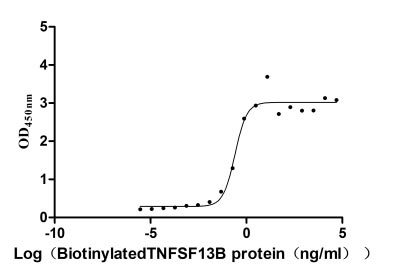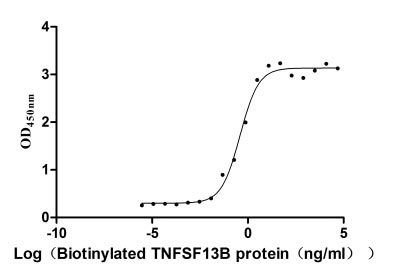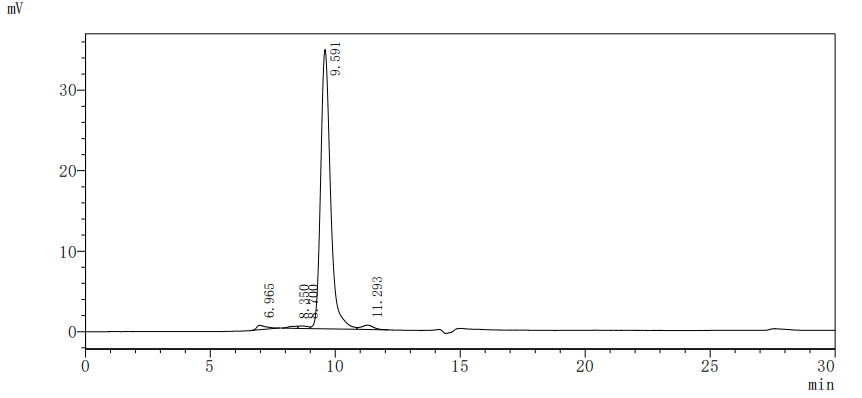The recombinant human TNFSF13B was produced in mammalian cells. The DNA fragment used to prepare the recombinant TNFSF13B protein corresponds to amino acid 134-285 of the human TNFSF13B protein containing an N-terminal hFc-Avi-tag. This TNFSF13B protein is an active protein, whose bio-activity has been validated in the functional ELISA. It binds to the human BCMA or human TNFRSF13C, with the EC50 of 0.1752-0.3657 ng/ml or 0.2699-0.5613 ng/ml, respectively. Its purity reaches up to 90%, determined by SDS-PAGE. This TNFSF13B protein has an apparent molecular mass of 46 kDa on the gel while its predicted mass is 46.2 kDa. Its endotoxin is less than 1.0 EU/ug measured by the LAL method. It is available now.
TNFSF13B, also called BAFF, modulates B cell survival, maturation, and differentiation by binding to its receptors, BAFF-R, TACI, and BCMA. Upregulation of BAFF is related to autoimmune diseases, including systemic lupus erythematosus, rheumatoid arthritis, and multiple myeloma. BAFF/BAFFR signaling is involved in the regulation of protein synthesis and energy metabolism required to extend the half-life of immature, transitional, and mature B cells, as well as other survival functions.









